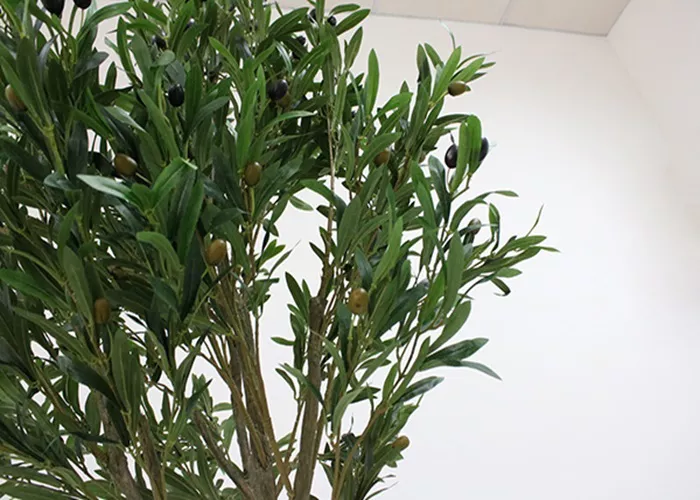Olive bonsai trees are a beautiful and rewarding addition to any garden or indoor space. These trees, native to warm climates, thrive in specific conditions and require careful attention to maintain their health and beauty. In this comprehensive guide, we will explore the intricacies of caring for olive bonsai trees, from understanding their growth environment and soil requirements to detailed care practices such as watering, feeding, pruning, and pest control.
Understanding Olive Bonsai Trees
Olive bonsai trees (Olea europaea) are a type of evergreen fruit tree that originates from the Mediterranean region. These trees are known for their longevity and ability to thrive in warm, sunny climates. Olive bonsai trees are not just miniature versions of full-sized olive trees; they are specifically cultivated and pruned to maintain a compact, aesthetic form.
Growth Environment
Olive bonsai trees thrive in warm, sunny climates with temperatures ranging from 15°C to 25°C. They have a high tolerance for drought but still require adequate irrigation and ventilation to ensure proper water circulation and air flow. Sunlight is crucial for olive bonsai trees, as it aids in the growth and development of their fruits.
Soil Conditions
While olive bonsai trees are not overly specific about soil type, they prefer well-drained, loose soil with a pH level between 6.5 and 7.5. Sandy loam or loamy soil is ideal for these trees. The soil should also contain moderate amounts of organic matter to provide essential nutrients and moisture.
Watering
Watering is a crucial aspect of caring for olive bonsai trees. Here are some guidelines to ensure proper hydration:
Spring and Autumn: Water your olive bonsai tree every two days, ensuring the soil remains moist.
Summer: Increase watering to once a day during the hot summer months.
Winter: Reduce watering to once a week, as the tree enters dormancy.
It’s important to note that overwatering can lead to root rot, while underwatering can stress the tree. Always check the soil moisture before watering and ensure that the water can drain freely from the pot.
Feeding
Feeding your olive bonsai tree with the right nutrients is essential for its growth and health. Here are some tips for feeding:
Composite Fertilizer: Use a balanced composite fertilizer, which is easy to find and effective. Apply fertilizer during the growing season (spring to autumn).
Organic Matter: Incorporate organic matter such as compost or well-rotted manure into the soil to provide a steady supply of nutrients.
Micronutrients: Sometimes, olive bonsai trees may require additional micronutrients such as boron and zinc. Consult a professional if you suspect a micronutrient deficiency.
Pruning
Pruning is a vital part of maintaining the health and aesthetic appeal of your olive bonsai tree. Here are some pruning guidelines:
Remove Dead or Diseased Branches: Prune away any dead, diseased, or damaged branches promptly to prevent the spread of disease and to encourage new growth.
Shape and Size: Prune the tree regularly to maintain its desired shape and size. Trim overgrown branches back to a healthy bud or branch.
Timing: Prune your olive bonsai tree in late winter or early spring, before the new growth begins.
Technique: Use sharp, clean pruning tools and make cuts at a 45-degree angle to promote healing and new growth.
Pest Control
Olive bonsai trees are susceptible to various pests and diseases. Here are some common pests and diseases and how to manage them:
Olive Fruit Fly: This pest lays eggs in the fruit, causing it to rot. Control olive fruit flies by and picking disposing of infected fruit promptly and using insecticidal soap or neem oil.
Leaf Miners: Leaf miners create tunnels in the leaves, which can weaken the tree. Treat leaf miners by removing infected leaves and spraying the tree with insecticidal soap.
Scale Insects: These tiny insects attach to the bark and leaves, sucking sap and secreting a waxy substance. Control scale insects by scraping them off and treating the tree with a horticultural oil or insecticidal soap.
Powdery Mildew: This fungal disease appears as a white, powdery substance on the leaves. Treat powdery mildew by pruning infected leaves and spraying the tree with a fungicide.
Spider Mites: Spider mites are tiny, eight-legged creatures that feed on plant sap, causing yellow spots on the leaves. Control spider mites by spraying the tree with water to dislodge them and using insecticidal soap or neem oil.
Additional Care Practices
Here are some additional tips for caring for your olive bonsai tree:
Repotting: Repot your olive bonsai tree every two to three years, or when it becomes rootbound. Choose a pot that is one size larger than the current one and use well-drained soil.
Mulching: Apply a layer of mulch around the base of the tree to retain moisture and regulate temperature. Use organic mulch such as straw, wood chips, or compost.
Winter Protection: In areas with harsh winters, protect your olive bonsai tree by bringing it indoors or covering it with a frost cloth. Olive trees are sensitive to frost and can be damaged or killed by severe cold.
Monitoring: Regularly inspect your olive bonsai tree for signs of pests, diseases, or other problems. Early detection and treatment can prevent serious damage.
Conclusion
Caring for an olive bonsai tree is a rewarding endeavor that requires patience, attention to detail, and a good understanding of the tree’s needs. By providing the right environment, soil, watering, feeding, pruning, and pest control, you can enjoy a healthy, beautiful olive bonsai tree that will thrive for many years. Remember, each tree is unique, and you may need to adjust your care practices based on the specific needs and conditions of your olive bonsai tree. Happy gardening!


